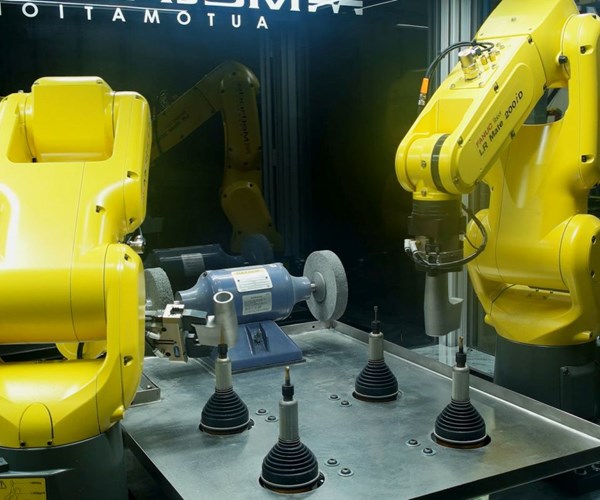Methods Machine Tools Launches Automation Center in Charlotte
To meet the demand for automation and robotics in manufacturing, Methods Machine Tools is expanding its automation capabilities with a 10,000-square-foot Automation and Integration Center in Charlotte, North Carolina.
#Industry40

To meet the aggressively growing demand for automation and robotics in manufacturing, Methods Machine Tools Inc., is expanding its automation capabilities with a new, 10,000-square-foot Automation and Integration Center in its Charlotte, North Carolina, facility. The center, slated to open this spring and already ramping up, is staffed by systems integration engineers and will have a range of equipment and capabilities from customer consultation to building cells and performing run-offs.
With existing automation centers in the company's Sudbury, Massachusetts, headquarters and in Wixom, Michigan, Methods has been applying automation technology for years in a range of machine tool and robotic solutions from small automated centers to large, complex multi-function machining cells.
"Manufacturers are increasingly realizing that incorporating automation and robotics are key to their productivity, profitability, and future," says Bryon Deysher, President and CEO of Methods Machine Tools, Inc. "Our new Automation and Integration Center will provide expanded capability for all projects spanning the U.S. and enhance the value of our customer experience at every level. I envision the future need for expanding this model in other regions of the U.S. as well."
RELATED CONTENT
-
Bar Feeder Basics
Some primary factors are often overlooked when considering how to justify the implementation of a bar feeder for turning operations.
-
Choosing an Automatic Bar Feeder
The bar feeder is the most common form of automation for turning operations. Selecting the right one requires consideration of the applications for which it will be used.
-
Automation in High-Mix, Low-Volume Turning Applications
Turning shops are familiar with automation for high-volume work, but the shifting landscape to smaller batch sizes has created new challenges.



